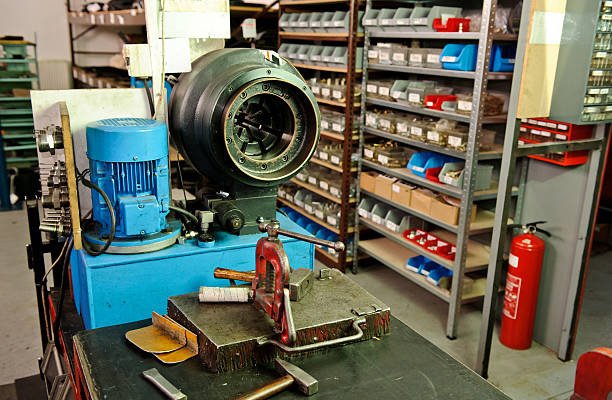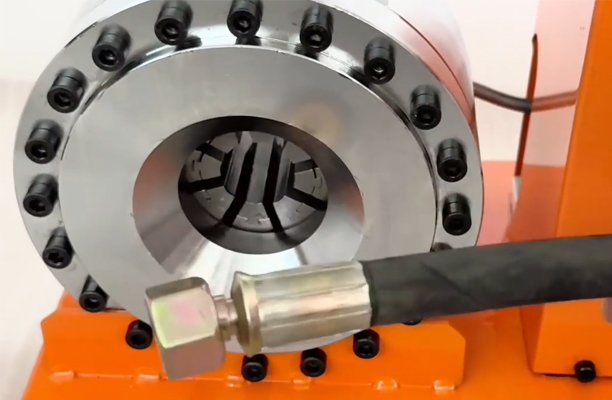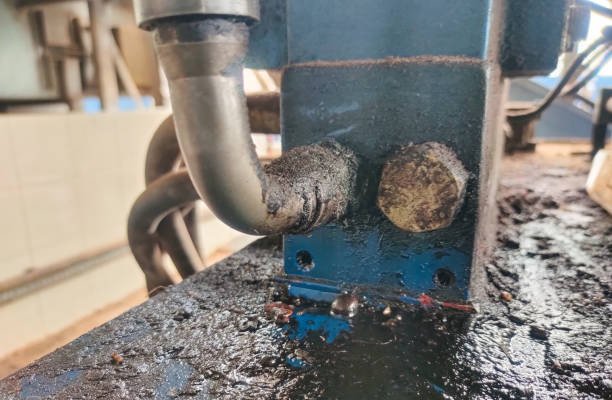Hydraulic hose assembly might seem like a straightforward task, but crimping and ferrule selection play a crucial role in ensuring the safety, efficiency, and reliability of hydraulic systems. These processes are the backbone of creating leak-proof, pressure-resistant connections that keep machinery running smoothly in industries like construction, agriculture, and manufacturing. Without proper crimping and the right ferrule choice, your hydraulic system could face leaks, failures, or even hazardous accidents.
At the heart of hydraulic hose assembly are two key processes: crimping and ferrule selection. These steps are often overlooked but are vital for ensuring the safety, performance, and longevity of the system. Let’s dive deeper into why they matter and how to do them right.
Why Is Hydraulic Hose Assembly So Critical?
A hydraulic hose assembly is more than just a simple connection between two points; it’s a highly engineered system that transfers hydraulic fluid under extreme pressure to power machinery. Here’s why proper assembly is non-negotiable:
- Prevention of Leaks: Hydraulic systems operate under high pressure. Even a small leak can lead to reduced performance or environmental hazards, not to mention wasted hydraulic fluid.
- Maintaining Safety: A sudden burst in a hydraulic hose can cause injury to operators or damage surrounding equipment. Proper assembly ensures that the hoses can withstand the pressure and wear.
- Improved Efficiency: Properly assembled hoses ensure smooth fluid flow, leading to better energy transfer and less system strain.
- Longevity: When hoses are assembled correctly, they are less likely to fail prematurely, saving time and money on repairs or replacements.
Improper assembly introduces vulnerabilities. Imagine spending thousands of dollars on high-quality hoses and fittings, only for poor crimping or an incompatible ferrule to cause system failure. The stakes are too high to ignore this critical process.
Crimping: The Backbone of Hydraulic Hose Assembly
Crimping might sound like a simple mechanical process, but it requires precision and expertise to get it right. Let’s break it down further.

What Is Crimping?
Crimping is the process of mechanically attaching a fitting to a hydraulic hose using a crimping machine. During this process, a ferrule (the metal collar) is compressed tightly around the hose, securing the fitting in place.
Think of crimping as the handshake between the hose and the fitting. A weak handshake (or a poorly crimped hose) results in a poor connection, while a strong, well-executed crimp provides a secure and reliable link.
Why Proper Crimping Is Essential
- Seals Against Leaks: Proper crimping creates a tight seal between the hose and the fitting, preventing fluid leaks.
- Handles Pressure: Hydraulic systems operate under immense pressure. A well-crimped assembly ensures that the connection can handle the stress without coming apart.
- Ensures Longevity: A properly crimped hose will last longer and maintain its performance over time.
Types of Crimping Machines
There are two main types of hydraulic hose crimping machines:
- Manual Crimping Machines: Suitable for smaller operations, manual machines require physical effort but are budget-friendly and portable.
- Hydraulic Crimping Machines: These are more advanced and efficient, making them ideal for high-volume operations. They use hydraulic pressure to apply precise force, resulting in consistent crimps.
Tips for Proper Crimping
- Use the Correct Crimping Machine: Ensure the machine is compatible with the type and size of the hose you’re working with.
- Follow Manufacturer Guidelines: Each hose and fitting has specific crimping parameters, including crimp diameter and force.
- Inspect the Crimp: After crimping, examine the assembly for any visible gaps or deformities. Test the crimped hose under pressure before putting it into operation.
Ferrules: The Unsung Heroes of Hydraulic Hose Assembly
While crimping grabs all the attention, ferrules quietly play a crucial role in the process. Selecting the right ferrule can make or break your hydraulic hose assembly.
What Is a Ferrule?

A ferrule is a cylindrical metal sleeve that slides over the end of a hydraulic hose and fitting during crimping. Its job is to:
- Provide structural integrity.
- Create a uniform compression around the hose during crimping.
- Prevent leaks by securing the fitting in place.
Types of Ferrules
Ferrules are available in different materials, sizes, and designs, depending on the type of hydraulic hose and application. The most common materials include:
- Carbon Steel: Affordable and strong, suitable for general-purpose applications.
- Stainless Steel: Resistant to corrosion, making it ideal for use in harsh or corrosive environments.
- Brass: Often used for low-pressure applications due to its softness and machinability.
How to Select the Right Ferrule
Choosing the correct ferrule requires attention to detail. Here’s what to keep in mind:
- Hose Type and Size: Ensure the ferrule matches the inner diameter and material of the hose. A mismatch can lead to loose connections or improper compression.
- Application Pressure: High-pressure applications require heavy-duty ferrules designed to withstand extreme stress.
- Fluid Compatibility: The ferrule material must be resistant to the type of hydraulic fluid being used. For example, stainless steel is ideal for applications involving corrosive fluids.
- Environment: Consider the operating environment, including temperature and exposure to chemicals or moisture, when selecting ferrules.
The Consequences of Using the Wrong Ferrule
- Leaks and Pressure Loss: An incompatible ferrule may not compress the hose evenly, leading to leaks.
- Reduced System Life: The wrong ferrule can accelerate wear and tear on the assembly.
- System Failure: A poor connection can cause the hose to burst under pressure, creating a safety hazard.
The Step-by-Step Process of Hydraulic Hose Assembly
Let’s get into the nitty-gritty of assembling a hydraulic hose. Here’s a detailed walkthrough:
- Measure and Cut the Hose
- Use a high-quality cutting tool designed for hydraulic hoses. Avoid saws or grinders, as they can fray the hose ends or introduce contaminants.
- Make a clean, straight cut to ensure a snug fit with the ferrule and fitting.
- Skive the Hose (If Necessary)
- Skiving involves removing the outer cover or inner tube of the hose to allow for better ferrule contact. Not all hoses require this step—check the manufacturer’s guidelines.
- Insert the Fitting
- Push the fitting into the hose until it reaches the insertion mark. This ensures the fitting is fully seated.
- Select the Ferrule
- Match the ferrule to the hose type, size, and application. Ensure it’s compatible with the fitting as well.
- Crimp the Assembly
- Set the crimping machine to the correct parameters.
- Position the ferrule in the machine and activate the crimping process. The machine will compress the ferrule tightly around the hose and fitting.
- Inspect the Crimp
- Check the crimp diameter using a caliper or go/no-go gauge. Look for visible defects such as gaps, uneven crimps, or deformities.
- Pressure Test
- Test the assembly under operating pressure to ensure it’s leak-proof and secure.
Common Mistakes to Avoid
Even with the best tools and materials, mistakes can happen. Here’s how to avoid the most common pitfalls:
- Skipping Manufacturer Guidelines: Always refer to the manufacturer’s specifications for crimp diameters, pressures, and ferrule compatibility.
- Improper Hose Cutting: A jagged or angled cut can compromise the connection. Use a proper cutting tool and ensure clean edges.
- Incorrect Ferrule Selection: Using a mismatched ferrule is a recipe for leaks and failures. Double-check compatibility before assembly.
- Over-Crimping or Under-Crimping: Too much force can deform the ferrule, while too little pressure leads to loose connections.
- Skipping Testing: Never skip pressure testing. It’s the best way to confirm the integrity of the assembly before use.
Why Safety Should Be Your Top Priority
It’s easy to focus on productivity and forget about safety, but in hydraulic systems, safety should always come first. A hose failure under high pressure can release fluid at dangerous speeds, creating serious hazards.
By ensuring proper crimping and ferrule selection, you:
- Reduce the risk of accidents.
- Maintain compliance with safety regulations.
- Protect workers and equipment.
Conclusion
In the world of hydraulic hose assembly, the details matter. Proper crimping and ferrule selection aren’t just technicalities—they’re the foundation of a safe and efficient hydraulic system.
When assembling hydraulic hoses:
- Choose high-quality materials.
- Use advanced crimping machines.
- Follow manufacturer guidelines to the letter.
- Test the assembly before use.
By taking these steps, you can ensure that your hydraulic systems run smoothly, safely, and reliably.
FAQs
1. What is hydraulic hose assembly?
Hydraulic hose assembly is the process of connecting a hydraulic hose with fittings and ferrules to ensure a secure, leak-free connection. It allows the hose to safely transfer pressurized fluids in hydraulic systems.
2. Why is crimping important in hydraulic hose assembly?
Crimping ensures a tight and secure connection between the hose and fitting. Proper crimping prevents leaks, withstands high pressure, and maintains the system’s safety and efficiency.
3. How do I choose the right ferrule for my hydraulic hose?
Choose a ferrule based on the type, size, and material of your hydraulic hose. Make sure the ferrule is compatible with the system’s pressure and the type of hydraulic fluid being used.
4. Can I reuse old fittings or ferrules?
No, fittings and ferrules are designed for single use. Reusing them can compromise the connection, leading to leaks or system failure.
5. How do I know if my hose assembly is safe to use?
After assembly, conduct a pressure test to ensure there are no leaks and that the crimped connection can handle the operating pressure. Visually inspect for any defects, such as uneven crimps or gaps.
6. How often should hydraulic hoses be inspected or replaced?
Hydraulic hoses should be inspected regularly for signs of wear, damage, or leaks. Replace them immediately if any issues are detected. Routine checks help prevent unexpected failures and downtime.





